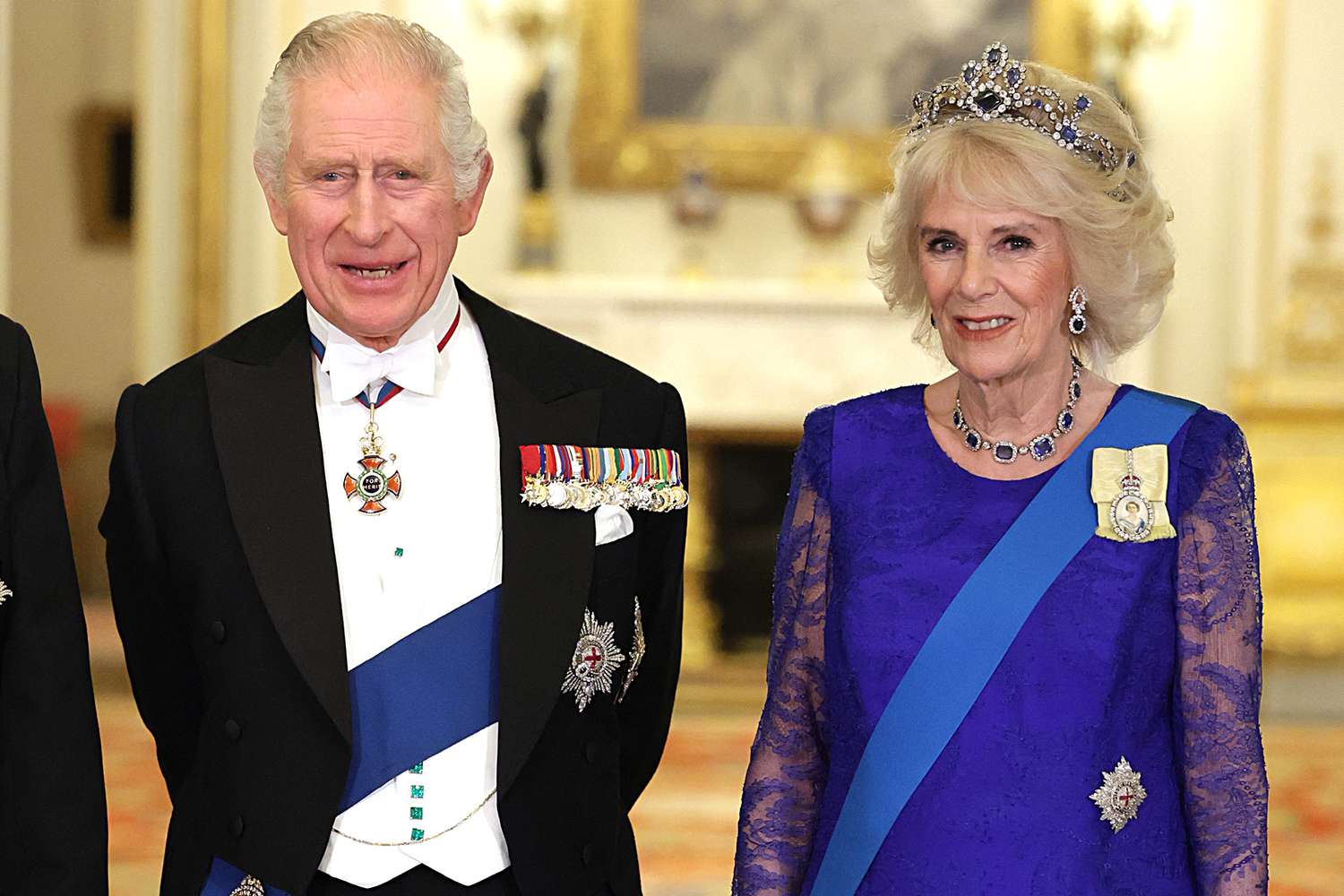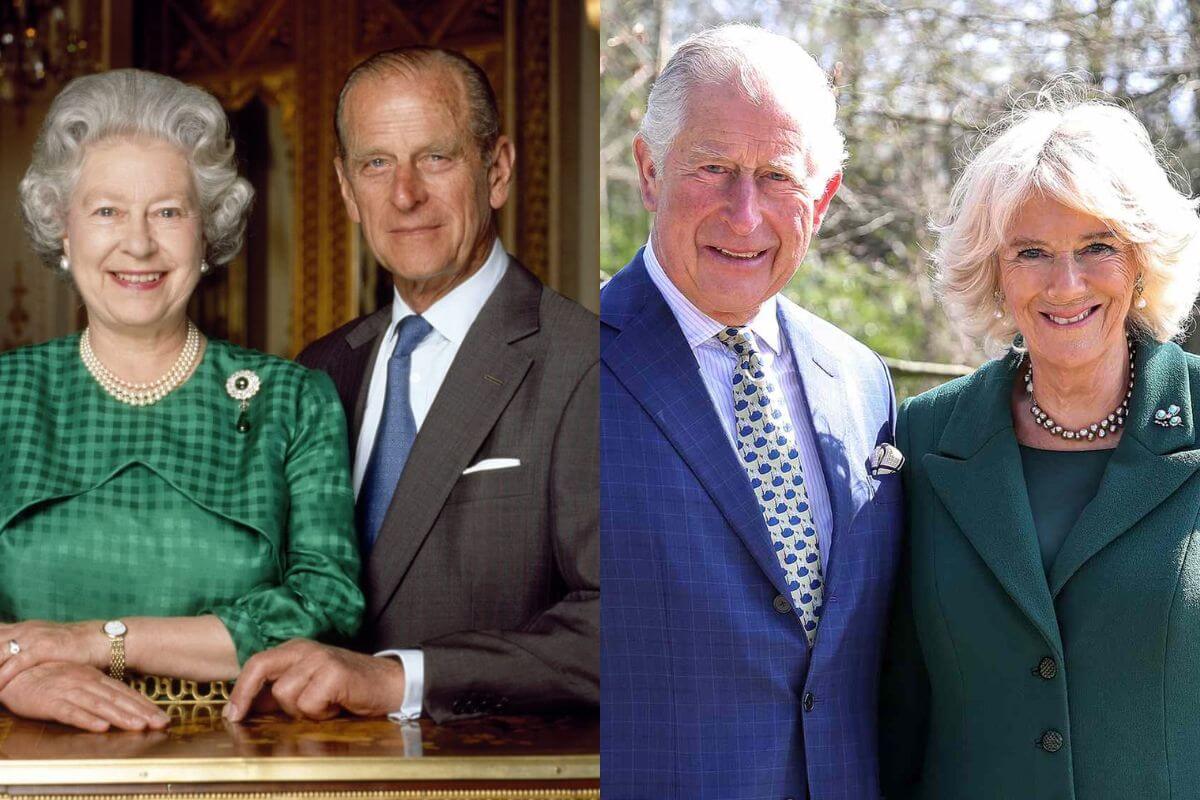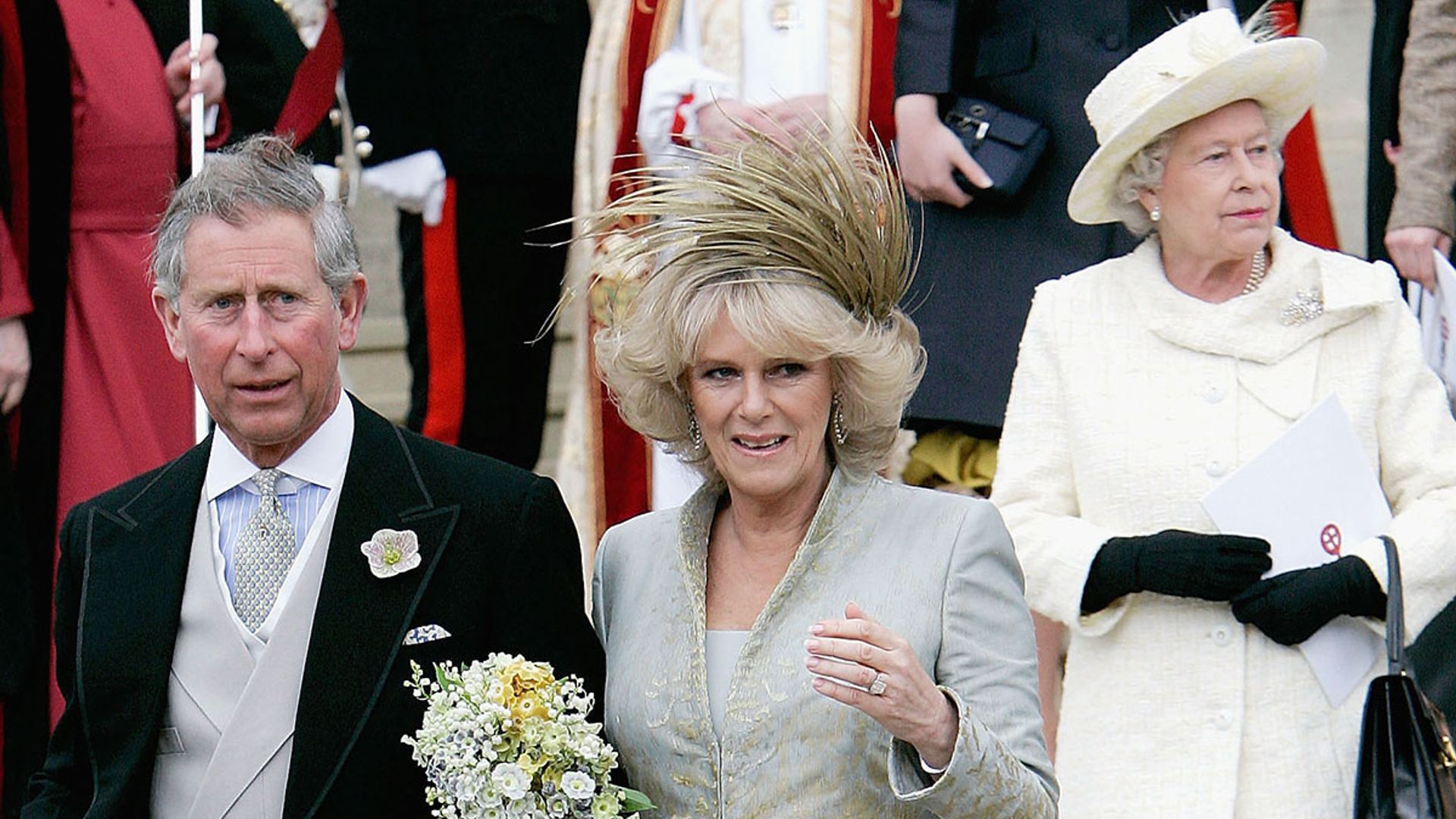The marriage of Prince Charles and Camilla Parker Bowles on April 9, 2005, was, in many respects, a truly historic occasion. It marked a significant moment for the British monarchy, especially given the long and often complicated story of their relationship. However, one detail about that day has continued to spark a lot of interest and, perhaps, a bit of head-scratching: the absence of Queen Elizabeth II from the civil ceremony itself.
It's a question that, quite frankly, still comes up often, even years later. People are naturally curious about why the reigning monarch, the groom's mother no less, would not be present for such a pivotal family event. You know, it's almost like trying to figure out the very origin of a common phrase, as "My text" points out, sometimes the complete story of why something happened can be a bit elusive, leaving us to piece together the likely reasons from various clues and widely accepted facts.
This situation with the Queen's attendance, or rather her partial attendance, at the wedding of her eldest son and heir, is a bit more nuanced than it might seem at first glance. There were several layers of considerations, from matters of state and religious protocol to family dynamics and public sentiment. We can certainly look at the widely accepted explanations and piece together a clear picture of that day, and what it meant for the Royal Family, really.
Table of Contents
- Charles and Camilla: A Brief Overview
- Personal Details and Biography
- The Wedding Day Itself: A Two-Part Affair
- Religious Considerations and the Church of England
- The Queen's Role and Personal Feelings
- Public Perception and Royal Pragmatism
- The Queen's Presence at the Blessing and Reception
- People Also Ask
Charles and Camilla: A Brief Overview
The relationship between Prince Charles and Camilla Parker Bowles, now Queen Camilla, spanned decades, marked by both public scrutiny and private devotion. Their story is, in a way, one of perseverance, and it certainly unfolded over a very long period. Before their marriage in 2005, both had been married before, and both had experienced public divorces. Prince Charles was, of course, previously married to Princess Diana, and Camilla was married to Andrew Parker Bowles. Their path to marriage was, therefore, not straightforward, and it involved a great deal of careful planning and consideration of royal traditions, you know.
The Royal Family, particularly after the very public difficulties surrounding Charles's first marriage, found themselves in a rather delicate position. The idea of the heir to the throne marrying a divorcée, especially one whose relationship with Charles had been a subject of widespread discussion, presented some unique challenges. This context is, in fact, quite important when we consider the arrangements for their wedding day, and why certain decisions were made, so it's a bit of a complex tapestry.
Personal Details and Biography
To really grasp the full picture, it helps to know a little more about the key figures involved. Their personal histories, and their positions within the monarchy, certainly shaped the decisions made around their wedding. Here's a quick look at some of their details:
| Detail | King Charles III (formerly Prince Charles) | Queen Camilla (formerly Camilla Parker Bowles) |
|---|---|---|
| Full Name | Charles Philip Arthur George | Camilla Rosemary Shand (formerly Parker Bowles) |
| Born | November 14, 1948 | July 17, 1947 |
| Parents | Queen Elizabeth II and Prince Philip, Duke of Edinburgh | Major Bruce Shand and Rosalind Cubitt |
| First Marriage | Lady Diana Spencer (1981-1996) | Andrew Parker Bowles (1973-1995) |
| Children | Prince William, Prince Harry | Tom Parker Bowles, Laura Lopes |
| Current Title | King of the United Kingdom and 14 other Commonwealth realms | Queen Consort of the United Kingdom and 14 other Commonwealth realms |
| Wedding Date (to each other) | April 9, 2005 | April 9, 2005 |
The Wedding Day Itself: A Two-Part Affair
The wedding of Prince Charles and Camilla was, quite uniquely, split into two distinct parts, and this arrangement is, arguably, central to understanding the Queen's absence from the first part. The couple first had a civil ceremony at Windsor Guildhall. This was a relatively modest affair, certainly by royal wedding standards, and it was a necessary step for their union to be legally recognized under English law. This particular part of the day was rather private, with only a select few family members and close friends present, you know.
Following the civil ceremony, there was a Service of Prayer and Dedication at St. George's Chapel, Windsor Castle. This was the religious blessing of their marriage, and it was a much grander event, attended by many more guests, including members of the Royal Family, foreign dignitaries, and friends. It's important to remember that this dual approach was a direct result of the circumstances surrounding their marriage, especially the fact that both were divorcés, which had implications for a full church wedding, as a matter of fact.
Religious Considerations and the Church of England
One of the most significant factors influencing the wedding arrangements, and by extension the Queen's attendance, was the position of the Church of England. As the Supreme Governor of the Church of England, Queen Elizabeth II held a very specific and sacred role. The Church of England, at that time, did not typically permit the remarriage of divorcés in church if their former spouse was still alive, especially if the divorce was not annulled. While this stance has softened somewhat since, in 2005, it was still a considerable point of doctrine, really.
Prince Charles, as the future Head of the Church, marrying a divorcée in a full church ceremony could have been seen as a contradiction of the Church's teachings, or at least a challenge to them. To avoid this perceived conflict, the civil ceremony was chosen for the legal marriage. The Service of Prayer and Dedication, which followed, was a blessing rather than a full wedding service, allowing for a religious acknowledgment of their union without directly contravening Church doctrine, which was, quite frankly, a very clever solution.
The Queen's position as Supreme Governor meant she had to uphold the Church's principles. Attending a civil ceremony, rather than a full church wedding, allowed her to support her son's marriage while also respecting her religious duties. It was a delicate balance, and, in a way, it showed her commitment to both her family and her constitutional role, too.
The Queen's Role and Personal Feelings
Beyond the religious protocol, there were also personal and institutional considerations for the Queen. It's widely understood that Queen Elizabeth II, as a deeply religious person, held strong views on marriage. While she certainly wished for her son's happiness, her personal beliefs, combined with her role as head of the Church, made the situation a bit more complex than a typical family wedding, you know. There was, naturally, a desire to maintain the dignity and tradition of the monarchy, which is, in fact, always a top priority.
Royal commentators and those close to the Palace suggested that the Queen's decision not to attend the civil ceremony was a reflection of her personal feelings regarding divorce, as well as her duty to the Church. However, her presence at the subsequent blessing and reception clearly indicated her acceptance and support of the marriage. It was a way of showing her approval without compromising her position or beliefs, which was, in some respects, a very careful maneuver.
It's also worth noting that the monarch's presence at a civil ceremony for a future king was, perhaps, seen as less traditional than a grand church wedding. The civil nature of the first part of the day might have been viewed as a slightly less formal affair, allowing the Queen to maintain a certain distance while still celebrating with her son later. This approach, in other words, allowed for both personal support and institutional decorum, quite literally.
Public Perception and Royal Pragmatism
The Royal Family is, of course, always very aware of public opinion. The years leading up to Charles and Camilla's marriage had seen a significant shift in how the public viewed their relationship. While initial reactions to Camilla had been mixed, over time, there was a growing acceptance and even warmth towards her. The Palace, therefore, had to navigate this evolving public sentiment very carefully, you know.
By opting for a civil ceremony followed by a blessing, and with the Queen attending only the latter, the Royal Family demonstrated a degree of pragmatism. This arrangement allowed them to acknowledge the reality of Charles and Camilla's long-standing relationship and their desire to marry, while also respecting traditional sensitivities and religious doctrines. It was, in a way, a masterclass in managing public expectations and royal protocol, so it was a very well-thought-out plan.
The Queen's decision could also be seen as a strategic move to help ease Camilla into her new public role. By not being at the civil ceremony, it kept the focus on the couple themselves during that more private, legal moment. Her presence at the grander blessing then served as a powerful symbol of official acceptance and welcome, which was, quite frankly, very important for public optics. Learn more about royal family traditions on our site.
The Queen's Presence at the Blessing and Reception
While the Queen did not attend the civil ceremony at Windsor Guildhall, her presence at the Service of Prayer and Dedication at St. George's Chapel was, quite honestly, a very significant moment. She arrived with Prince Philip, and their attendance at this religious blessing clearly signaled their approval and support for the marriage. This part of the day was a much larger, more public event, and her participation here was a powerful endorsement, you know.
Following the blessing, the Queen hosted a reception for the newlyweds and their guests at Windsor Castle. This was, in fact, a traditional and very visible display of familial and institutional backing. The images of the Queen, Prince Philip, Charles, and Camilla together at the reception were widely circulated and helped to cement the public's understanding that the marriage had the full blessing of the monarch. It was, in a way, the public celebration of their union, and it was very important for the overall narrative, really.
Her toast at the reception, reportedly a warm and humorous one, further emphasized her acceptance. She famously compared their perseverance to the Grand National horse race, saying they had "overcome Becher's Brook and The Chair and all kinds of other terrible obstacles." This lighthearted yet poignant remark showed her personal warmth and support, despite the earlier protocol-driven absence. It was, quite literally, a moment that captured the spirit of the day, and it showed her true feelings, you know. We can certainly look at how other royal events have balanced tradition and modern needs on this page .
People Also Ask
Did the Queen approve of Charles and Camilla's marriage?
Yes, she did, quite clearly. While her absence from the civil ceremony was a matter of protocol and personal belief regarding divorce, her presence at the Service of Prayer and Dedication and the reception afterwards very much indicated her approval. She hosted the reception, made a warm speech, and was pictured smiling with the couple, which, in a way, spoke volumes about her acceptance, you know. Her actions certainly showed her support, as a matter of fact.
Why was Camilla not Queen consort immediately?
Camilla did not immediately become Queen Consort upon marrying Charles in 2005 because, at that time, it was announced she would use the title Princess Consort. This decision was made to reflect public sentiment at the time, given the sensitivities surrounding Charles's first marriage and Camilla's role. It was, in a way, a pragmatic move to ease her into her royal role without causing undue controversy. However, in February 2022, Queen Elizabeth II publicly stated her "sincere wish" that Camilla be known as Queen Consort when Charles became King. So, upon Charles's ascension in September 2022, Camilla did, in fact, become Queen Consort, which was a very significant change, really. For more on royal titles, you could look up information on the official Royal Family website.
Where did Charles and Camilla get married?
Prince Charles and Camilla Parker Bowles had their civil ceremony at Windsor Guildhall, which is a municipal building in Windsor, England. This was the legal part of their marriage. Following this, they had a Service of Prayer and Dedication, a religious blessing, at St. George's Chapel, which is located within the grounds of Windsor Castle. So, it was, in fact, a two-part event held in two distinct locations within the Windsor area, you know.



